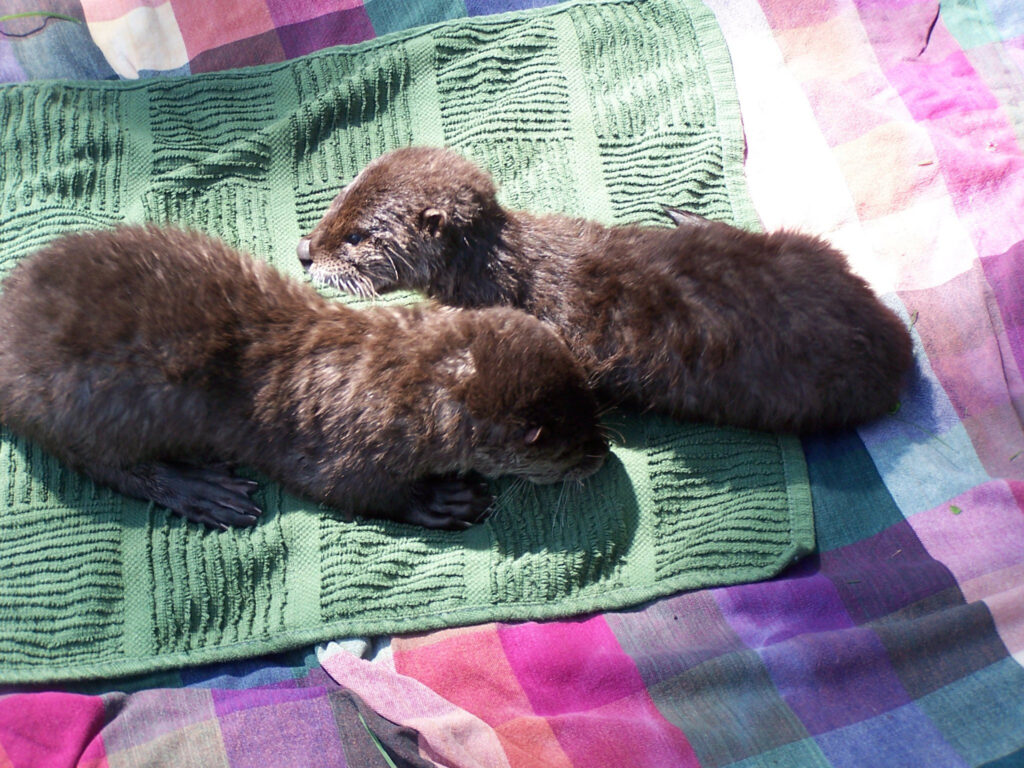By Freddy Moyano
Correspondant
GREEN BAY – Bay Beach Wildlife Sanctuary (BBWS) otter ambassadors, Sadie and Sammy, passed away within days of each other last week due to underlying illnesses.
In my many trips to the BBWS this year for the Rehabilitation Animal of the Month series, I have learned that the risk of death due to unseen, internal injuries is a constant in animal rescue and rehabilitation.
“Not all arrivals are happy ones” are words I have heard often from curator Lori Bankson and her staff.
Bankson said some tragic experiences can remain inside one’s mind for weeks after death occurs.
Bankson also said these situations push the staff to continue to work to save as many lives as possible, tag-teaming with trusted veterinarians.
Yet, she said rehabilitating animals is not for everyone – as the emotional factor is a big part those who work in the sanctuary have to make peace with.
Great horned owl
Three months ago, as I was leaving the Observatory Building, a juvenile male great horned owl–not older than 12 months–was brought in from the Howard area by a citizen.

Bankson said it worried her that the bird was barely moving inside the temporary cage in which he was dropped off.
To my untrained eye, the owl looked as calm and fine as could be, but Bankson’s many years of experience said otherwise.
“It needs to be wanting to eat us,” Bankson said of the typical demeanor of a healthy owl.
Some of the red flags, Bankson said, can be detected over the phone.
The anonymous person who called and brought it in said he had been observing motionless patterns in this owl, sitting by the base of a tree for many hours, looking around and not flying away.
The great horned owl ended up dying over the next 48 hours, according to Bankson, due to internal injuries.
Bankson said he probably ran into a wire or crashed into a branch, sustaining severe trauma.
Sadie and Sammy
Back in our Feb. 28 issue, when we covered the story of the already rehabilitated and released barred owl (the sanctuary’s first patient of the year), Bankson said that as a general rule, injured animals admitted to the sanctuary aren’t given names, so as not to create emotional attachments.
There are some exceptions to the rule if one were to look at the case of otters Sadie and Sammy, at first known as Pinkie and Little Man before the community came up with their new and respective names during a contest.
On July 20, the Bay Beach Wildlife Sanctuary shared on its Facebook page the sad news of the passing of the longtime resident otters, siblings Sadie and Sammy, one within a few days of the other.
The sanctuary’s post highlighted through Bankson’s own experience some of the fond memories and the impact the otters had on the community.
According to Bankson, the otters were admitted in April 2008, when they were about one week old and were in need of urgent care after being found in a cranberry bog.

“My husband cared for them overnight with frequent feedings,” Bankson said.
The staff at the Wildlife Sanctuary, she said, witnessed special moments such as when they ate fish for the first time.
In many of our rehabilitation stories, there have been many cases requiring food paste being tubed into the rehabilitated species’ little stomachs.
“Our goal was to get them back into the wild” Bankson said.
However, she said at six weeks old they became very ill.
Bankson said they could not separate themselves from the otters during their critical recovery days at that time.
“They recovered successfully, but they became habituated on us and could not be successfully returned to the wild” Bankson said.
As Bankson often mentioned while writing about animals in rehabilitation, there is always the goal of adapting the rescues to eventually survive in the wild.
Since that could no longer be the case with the loveable otters, they were put to work as ambassadors at the sanctuary.
Sadie and Sammy appeared in the 2008 Holiday Parade and several other community events.
They were even a part of the welcome at Walk for Wildlife one year, leading walkers to the first station.
Bankson said earlier this month, after years of long-term health problems, Sadie required emergency veterinary care but ended up passing away due to her pre-existing cancer condition.
“Sadie always led Sammy around. Sammy looked for her and started to get upset and not eat,” Bankson said.
She said staff worked with the veterinarians to help Sammy as much as they could, but he passed away in his sleep two weekends ago.
In the Facebook announcement, Bankson expressed the sanctuary’s gratitude to the community for the great support they received during the 14 years they had the otters.
Otter Facts
According to SeaWorld.org, otters live an average of 10 to 15 years [in captivity].
Some have lived more than 20 years in zoological parks.
The same organization said otters are susceptible to many diseases, and several have been reported in river otters, including kidney stones, tooth decay and cirrhosis of the liver.
River otters are also susceptible to parasitic infestations by flukes, roundworms, tapeworms and possibly ticks.
Freddy Moyano, wildlife expert and award-winning videographer based in Green Bay, is the correspondent for our Rehabilitation Animal of the Month monthly series.
Stay tuned for next week’s issue on another impactful story involving species being rehabilitated at the Bay Beach Wildlife Sanctuary.
To volunteer and see how you can help with animal rescue and rehabilitation in the area, visit
baybeachwildlife.com
For more about Freddy’s award-winning wildlife videos, visit instragram.com/freddymoyanoofficial
